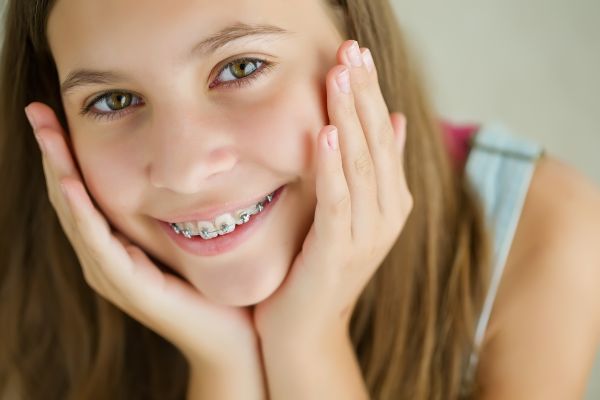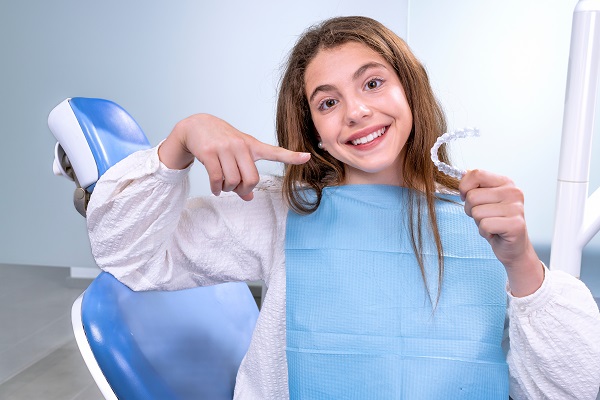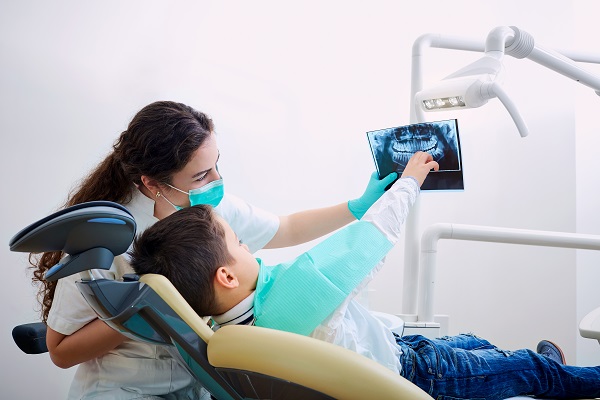How an Orthodontist Can Straighten Crooked Teeth

If you have misaligned teeth, it is never too late to visit an orthodontist for treatment. Today, there are many options available beyond basic metal braces. For example, clear and tooth-colored braces are becoming more popular. Read on to learn how a few popular orthodontic treatments work.
How braces work
Besides the traditional metal braces, a patient can also get ceramic braces. These are closer to the natural tooth color. Each bracket is attached to the center of a tooth. An orthodontist will place wires in each bracket. During placement, an orthodontist will use dental bonding material to attach each bracket to the tooth. Sometimes, the orthodontist will use ultraviolet light to cure, or set, the dental cement.
Generally, braces are extremely successful. The age of a patient is one of the factors that will determine the success rate of the braces. Following the orthodontist’s instructions can help braces be more successful as well. For example, many orthodontists will have patients wear rubber bands or other orthodontic appliances. This can facilitate treatment.
Many people think that teeth are connected directly to the jawbone. It can be difficult to imagine how teeth can be moved. However, the teeth are connected to the jaw by a membrane under the gums. The pressure that braces place on the teeth affects the membrane and changes the position of the teeth.
Parts of braces
First, an orthodontist will place the brackets on the teeth. Brackets are made out of plastic, ceramic or stainless steel. Each tooth has one bracket because it will allow more even pressure on each tooth. The orthodontist will place archwires on the teeth to connect the brackets. The orthodontist will use these wires to place pressure on the teeth. Usually, these are made from stainless steel or titanium.
The orthodontist will then place elastic bands, or O-rings, on each bracket. This can place more pressure on each tooth and the jaw. Sometimes, patients will have the option of choosing O-rings in different colors. For additional pressure for specific teeth, an orthodontist may use rubber bands. These usually connect an upper and lower tooth.
How clear aligners work
Another popular treatment option is clear aligners. An orthodontist will make a set of aligners, each of which will move the teeth a small amount. The first time a patient wears one of the aligners, it will place pressure on the teeth. As the teeth move, the pressure from that aligner will lessen.
Then the patient will move on to another aligner. Usually, a patient will wear an aligner for two weeks. Each aligner must be worn about 20 hours a day. This can help to speed up treatment.
Visit an orthodontist today
It is a good idea to know about the tools and methods that an orthodontist uses to straighten crooked teeth. This can help you prepare for orthodontic treatment. Whether you choose braces, clear aligners or another treatment, there is an option for you out there.
Request an appointment here: https://www.drsallysong.com or call The Orthodontic Center Of Wayne - Dr. Sally Song at (973) 696-5220 for an appointment in our Wayne office.
Check out what others are saying about our services on Google: Read our Google reviews.
Recent Posts
Even though braces are common among teenagers, getting them is a new orthodontic experience for every patient. Teens and their parents tend to have many questions about braces and other orthodontic treatments for teens, when to get braces, and what having braces will be like. Here are some of the most common questions orthodontists hear…
The primary goal of early orthodontic treatment is to prevent and fix bite misalignments. Several causes, including genetics, the premature loss of primary (baby) teeth, and harmful oral habits (like thumb sucking) may lead to such anomalies. Orthodontic abnormalities might be congenital or occur during early childhood. Straight teeth can reduce the incidence of dental…
Invisalign® has changed how willing teenagers –– and everyone else –– are to start teeth straightening treatments. It provides an alternative to traditional metal braces that is virtually impossible to detect. Invisalign® treatments work the same way conventional braces work, the aligner trays exert a force on the patient's teeth pushing their teeth into better…
Oral health is foundational to good overall health. Through the help of an orthodontist and bite correction, difficulties with chewing or speaking can be overcome. The inability to ingest food or clearly articulate impacts both physical and mental health. Bite correction has the potential to change the course of an individual’s health and wellness.Changes in…


